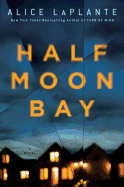
Someone is abducting and murdering girls from Half Moon Bay, a small town south of San Francisco. While resident Jane O'Malley, who works at a plant nursery, insists that she's no murderer, she admits to the accusing mother of one of the girls, "I do odd things sometimes." (For one, Jane calls random strangers on the phone and then hangs up, just to make what she thinks of as a human connection.) Doing odd things comes with the bereaved-parent territory: in Berkeley the previous year, a reckless driver killed Jane's teenage daughter, Angela. Jane's husband left her for another woman not long afterward.
Darker examples of Jane's behavior following Angela's death precipitated her move from Berkeley to Half Moon Bay, where, like everyone else, Jane obsesses about the murders. Meanwhile, the FBI, which has established a temporary office in town, considers her a suspect. It's not just that Jane has no alibis for the times of the abductions and that the FBI thinks the killer is female (the corpses are found dolled up with makeup); it's also that those who have learned about Angela's death find it easy to interpret Jane's emotional shakiness as moral depravity. The way that Alice LaPlante finesses this witch hunt-like thread gives the absorbingly macabre Half Moon Bay its underpinning of compassion. If Jane's behavior is sometimes baffling, it's also true that LaPlante (Turn of Mind) hints that the character's psychological damage began long before she lost her child. --Nell Beram, author and freelance writer

